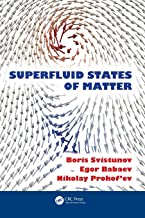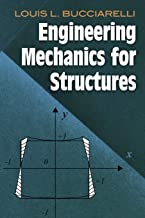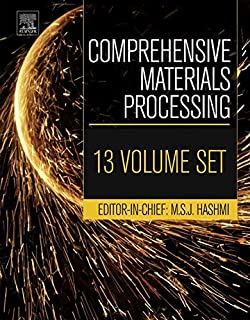Superfluid States of Matter
Original price was: ₹16,155.00.₹12,924.00Current price is: ₹12,924.00.
ISBN: 9781439802755
Author/Editor: Boris V Svistunov
Publisher: CRC Press
Year: 2015
1 in stock (can be backordered)
Description
Covers the State of the Art in Superfluidity and Superconductivity
Superfluid States of Matter addresses the phenomenon of superfluidity/superconductivity through an emergent, topologically protected constant of motion and covers topics developed over the past 20 years. The approach is based on the idea of separating universal classical-field superfluid properties of matter from the underlying system’s “quanta.” The text begins by deriving the general physical principles behind superfluidity/superconductivity within the classical-field framework and provides a deep understanding of all key aspects in terms of the dynamics and statistics of a classical-field system.
It proceeds by explaining how this framework emerges in realistic quantum systems, with examples that include liquid helium, high-temperature superconductors, ultra-cold atomic bosons and fermions, and nuclear matter. The book also offers several powerful modern approaches to the subject, such as functional and path integrals.
Comprised of 15 chapters, this text:
Establishes the fundamental macroscopic properties of superfluids and superconductors within the paradigm of the classical matter field
Deals with a single-component neutral matter field
Considers fundamentals and properties of superconductors
Describes new physics of superfluidity and superconductivity that arises in multicomponent systems
Presents the quantum-field perspective on the conditions under which classical-field description is relevant in bosonic and fermionic systems
Introduces the path integral formalism
Shows how Feynman path integrals can be efficiently simulated with the worm algorithm
Explains why nonsuperfluid (insulating) ground states of regular and disordered bosons occur under appropriate conditions
Explores superfluid solids (supersolids)
Discusses the rich dynamics of vortices and various aspects of superfluid turbulence at T 0
Provides account of BCS theory for the weakly interacting Fermi gas
Highlights and analyzes the most crucial developments that has led to the current understanding of superfluidity and superconductivity
Reviews the variety of superfluid and superconducting systems available today in nature and the laboratory, as well as the states that experimental realization is currently actively pursuing
Additional information
| Weight | 1.179 kg |
|---|
Product Properties
| Year of Publication | 2015 |
|---|---|
| Table of Contents | I Superfluidity from a Classical-Field Perspective Neutral Matter Field Classical Hamiltonian Formalism Basic Dynamic and Static Properties Matter Field Under Rotation Superfluidity at Finite Temperatures and Hydrodynamics Equilibrium Statistics of a Superfluid Basics of Superfluid Hydrodynamics, Thermomechanical Effects, Hydrodynamic Hamiltonian and Action References Superfluid Phase Transition XY Universality Class High-Temperature Expansion for the XY Model J-Current Models Dual Descriptions of Normal and Superfluid Phases High-Temperature Expansion for the | |Model References Berezinskii-Kosterlitz-Thouless Phase Transition Statistics of Vortices at Large Scales Kosterlitz-Thouless Renormalization-Group Theory References II Superconducting and Multicomponent Systems Charged Matter Fields U(1) Gauge Theory U(1) Mean-Field Gauge Theories, London and Ginzburg-LandauModels Type-1 and Type-2 Superconductors Vortices in a Superconductor Upper and Lower Critical Magnetic Fields (Hc1 and Hc2) Critical Coupling = 1: Bogomolny Bound and Equations Summary of the Magnetic Response and Vortex Liquid Magneto-Rotational Isomorphism Superconducting Phase Transition References Multicomponent Superconductors and Superfluids, and Superconducting and Metallic Superfluids Mixtures of Superfluids and Entrainment Effect Multicomponent Superconductors Fractional Vortices Superfluid Sector of Liquid Metallic Hydrogen-Type System Rotational Response of a Charged Sector in the Multicomponent Superconductor and Violation of the London Law Violation of London Electrodynamics Skyrmion and Hopfion Topological Defects Magnetic Responses and Type-1.5 Superconductivity Effects of Intercomponent Interactions in Multiband Systems Composite U(1) Order and Coflow/Counterflow Superfluidity References III Quantum-Mechanical Aspects: Macrodynamics Quantum-Field Perspective Coherent States, Operator of Phase Harmonic Hydrodynamic Hamiltonian Superfluid Thermodynamics at Low Temperature Density Matrix Functional Integral Representation for Bosonic Fields Classical-Field Limit: Gross Pitaevskii Equation Superfluidity and Compressibility: The XY Model Paradox Connectivity of the Ground-State Wavefunction Popov Hydrodynamic Action Long-Range Asymptotics of Off-Diagonal Correlators Cooper Pair Problem Where Does the Coulomb Repulsion Go? BCS-BEC Crossover References Path Integral Representation Lattice Path Integrals Lattice Gauge Field and the Winding Number Formula Continuous-Space Path Integrals Nonclassical Moment of Inertia Formula Green's Function, Density Matrix, and Superfluidity General Aspects of Path Integral Monte Carlo Worm Algorithm References Supersolids and Insulators Supersolid State from the Classical-Field Perspective Supersolid State from the Quantum-Particle Perspective Existence of Insulators Mott Insulators Superfluidity and Disorder Theorem of Inclusions Superfluidity in Disordered Lattice Models Superfluidity of Crystalline Defects References Dynamics of Vortices and Phonons: Turbulence Basic Relations of Vortex Dynamics Kelvin Waves Vortex-Phonon Interaction Superfluid Turbulence References IV Weakly Interacting Gases Green's Functions and Feynman's Diagrams Matsubara Representation Diagrammatic Technique for Normal Bosonic Systems Thermodynamics of Weakly Interacting Bose Gas, BCS Theory Main Results Beliaev's Diagrammatic Technique Thermodynamic Functions in the Quasicondensate Region Expansion Parameters: Estimates for Higher-Order Terms Long-Range Off-Diagonal Correlations Normal Region Fluctuation Region Weakly Interacting Fermi Gas References Kinetics of Bose-Einstein Condensation Weakly Turbulent State of a Degenerate Bose Gas Kinetic Equation in the Weak-Turbulence Regime Self-Similar Analysis of Kinetic Equation Strongly Nonequilibrium Bose-Einstein Condensation References Historical Overview: Nature and Laboratory Historical Overview Liquid Helium, Superconductivity, Einstein's Classica Matter Field Lambda Point, Abnormal Heat Transport, Superfluidity Theories Enter, London, Tisza, Landau, and Bogoliubov Off-Diagonal Long-Range Order, Vorticity Quantization, Quantum-Statistical Insights Meissner-Ochsenfeld Effect, London Phenomenology Magnetic Flux Quantization Ginzburg-Landau Phenomenology, Shubnikov Phase/Abrikosov Lattice BCS Theory Advent of Field-Theoretical Methods Josephson Effect, The Phase, Popov Hydrodynamic Action Superfluid Phase Transition Multicomponent Order Parameters/Effective Theories Related Developments BEC in Ultracold Gases References Superfluid States in Nature and the Laboratory Helium-4 Helium-3 Dilute Trapped Ultracold Gases Resonant Fermions: From Ultracold Atoms to Neutron Stars Electronic Superconductors Superconductivity of Nucleons: Finite Nuclei, Neutron Stars, and Liquid Metallic Hydrogen Color Superconductivity of Quarks Stable, Metastable, and Unstable Elementary Excitations Superfluid States in Optical-Lattice Emulators References Index |
| Author | Boris V Svistunov |
| ISBN/ISSN | 9781439802755 |
| Binding | Hardback |
| Edition | 1 |
| Publisher | CRC Press |
You must be logged in to post a review.






Reviews
There are no reviews yet.